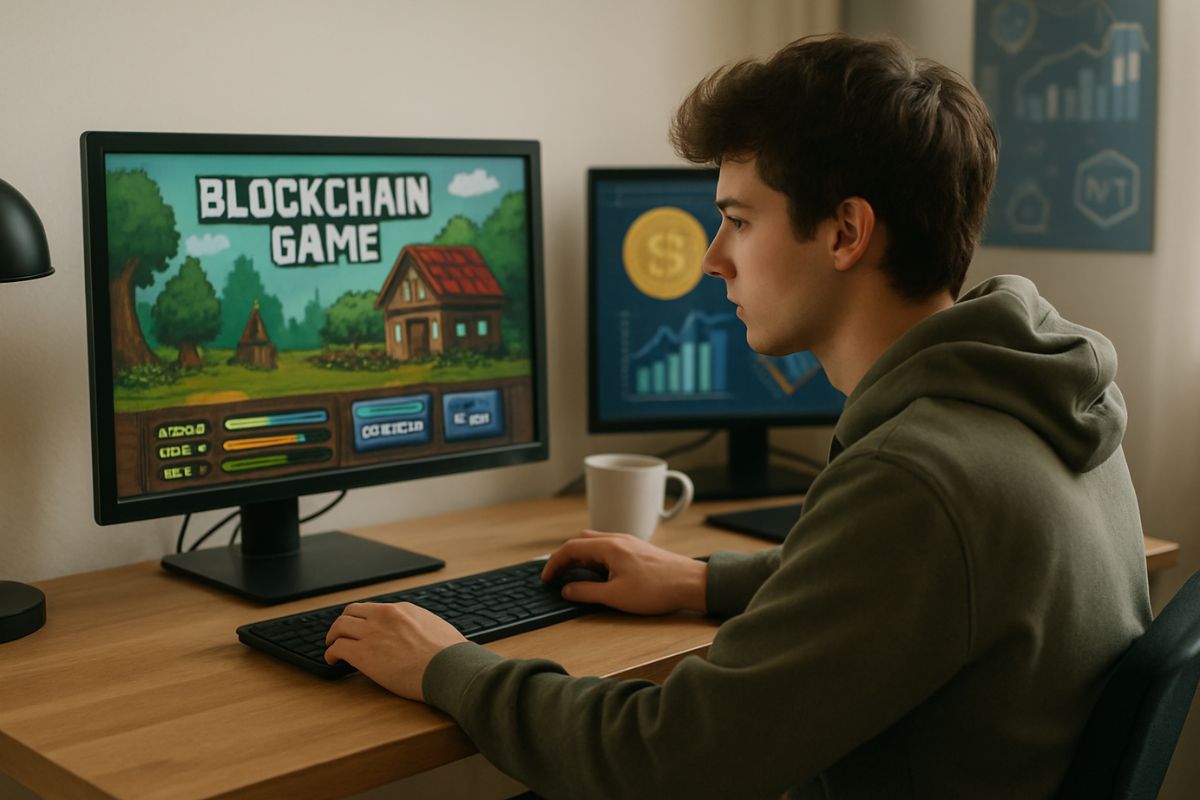
The idea of earning a real income simply by playing a video game captured imaginations around the globe. For a time, play-to-earn, or P2E, was one of the most exciting developments in the world of cryptocurrency, with stories of players earning life-changing sums. It promised a future where entertainment and work could become one and the same.
But as the initial excitement settled, a critical question emerged: can these game economies actually last? For any business, investor, or creator looking at the future of digital interaction, understanding the difference between a temporary boom and a sustainable model is vital. The long-term health of these new digital worlds depends on building real value, not just temporary hype.
A Quick Look at P2E Economics
This article examines what makes a play-to-earn game economy sustainable in the long run. Here are the main points we will touch on:
- The Early Model: We’ll look at how first-generation P2E games worked, often relying on a constant flow of new players to keep the economy afloat.
- The Central Challenge: We will explore the core problem of token inflation and what happens when a game’s economy is a closed loop, where value is just passed between players rather than being generated.
- Pathways to Sustainability: We’ll discuss how new models are evolving by focusing on external revenue, creating fun experiences, and shifting from “play-to-earn” to “play-and-own.”
The First Wave: A Model Built on Growth
The initial P2E games that became household names operated on a beautifully simple, yet ultimately fragile, economic loop. Players would complete tasks or win battles within the game to earn crypto tokens. These tokens had real-world value because new players, who needed those same tokens to get started, were willing to buy them on open markets.
For a while, this system worked wonders. As long as more people were joining than leaving, the demand for the game’s tokens kept prices high, and existing players were rewarded handsomely. It created a powerful wave of adoption and demonstrated that players were eager to participate in games where they had a real financial stake. The problem, however, was that the entire economy was dependent on continuous, exponential growth.
The Core Challenge: Closed-Loop Economies
The biggest challenge facing early P2E models was that they were often “closed-loop” systems. This means the money being paid out to existing players came almost entirely from the money being put in by new players. There was no significant source of outside revenue coming into the game’s economy.
Think of it like a private club where new members have to pay a hefty fee to join, and that fee is distributed among the old members as a “dividend.” The club feels profitable for the insiders as long as new people are lining up to get in. But what happens when the line gets shorter? The dividends dry up, and the perceived value of being a member plummets.
This is what happened to many P2E games. Their tokens were created in huge numbers to reward players, leading to massive inflation. When player growth slowed, there weren’t enough new buyers to absorb all the tokens being sold by existing players trying to cash out their earnings. This created a downward spiral in the token’s price, making it no longer worthwhile to play, which in turn caused even more players to leave.
Building a Lasting Digital Economy
For a P2E game to be sustainable, its economy must generate value independently of player growth, a critical consideration for the future of digital business. It needs to function like a real-world business with genuine revenue streams. The focus is shifting from creating a system that pays players to creating a great game that people are willing to spend money on, which in turn can fund the rewards. This is a far more stable approach, much like the economic impact of crypto casinos, which are built on a clear business model where the platform generates predictable revenue.
A sustainable game economy might include several sources of external income:
- Cosmetic Sales: Players paying real money for unique skins, outfits, or other visual items that don’t affect gameplay.
- Marketplace Fees: The game taking a small percentage cut from every transaction that occurs on its player-to-player marketplace.
- Sponsorships and Advertising: Brands paying to have their products or logos featured within the game world.
- Tournament and Event Passes: Players paying entry fees to compete in special events for large prize pools.
When a game has these kinds of revenue streams, it can use that money to fund the “earn” side of its economy without relying on new players. The rewards become a community benefit funded by a successful product, not a speculative bubble.
The Shift to “Play-and-Own”
This economic reality is also changing the philosophy behind P2E. The model is maturing from “play-to-earn,” which implies a job, to “play-and-own,” which emphasizes true ownership of digital assets. In this new model, the primary reward isn’t a steady stream of tokens but ownership of unique in-game items (NFTs) that have value because of their utility or rarity.
This value can still be highly volatile, and players who participate are taking on a genuine financial position. The skills needed to succeed are not just about being good at the game but also about understanding the market. In many ways, the financial management involved mirrors the risk in DeFi yield farming, where participants must weigh potential rewards against market volatility and platform security. The value comes from owning a piece of a game world you love, with the possibility of that ownership becoming more valuable over time.
Ultimately, the long-term health of these digital economies rests on a simple truth: the game has to be fun. When a game is enjoyable on its own merits, players will come, and some will be willing to spend money. That spending creates a real economy, which can then be used to reward the dedicated community that makes the game world come alive.


No Comments